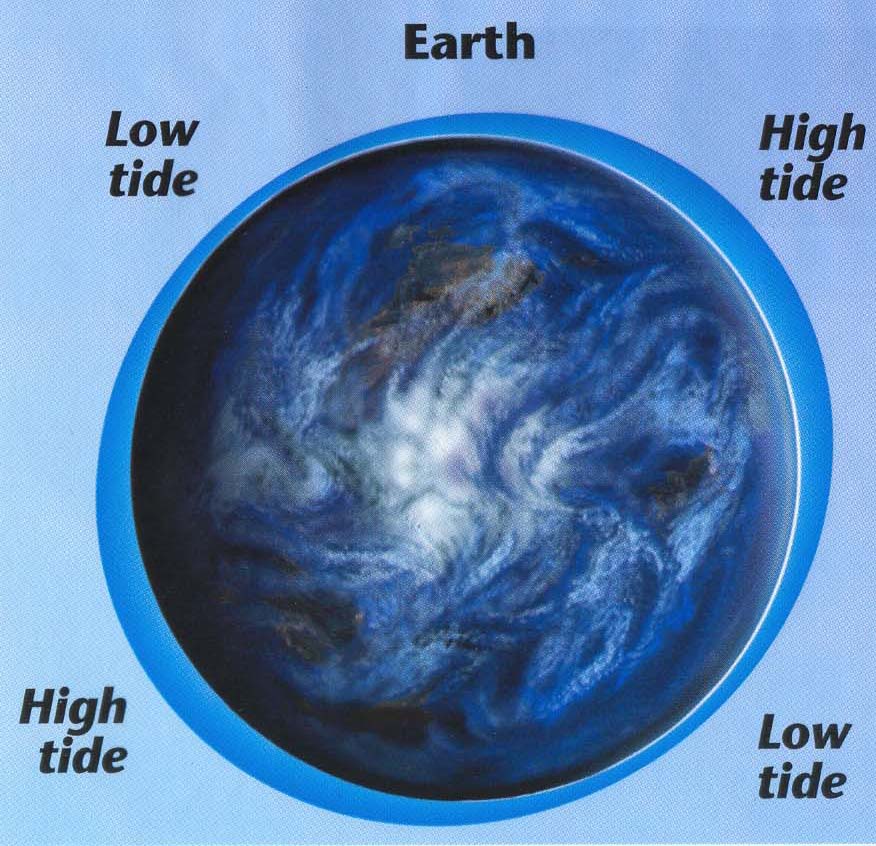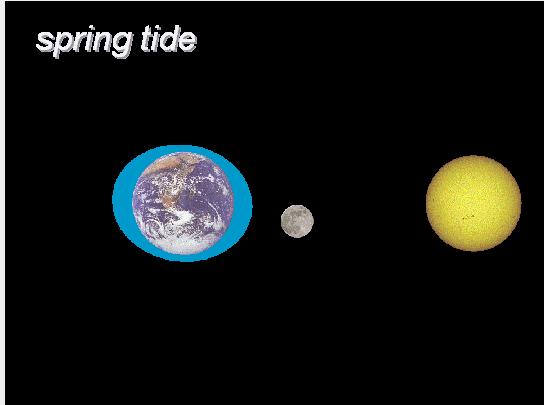#WavesUponWavesUponWaves
When we first put together the column on waves (see #WavesUponWaves), we noted that we’d get back to waves and talk about different kinds of waves - tsunamis, deep, shallow, non-wind, etc – and the effect they have on mariners. This column completes that promise.
Wind Creates Waves
Almost always, this is true. Almost. There are what scientists call “non-wind” waves; the two most common are the tides and tsunamis. In #WavesUponMoreWaves, we closed the column by noting that the longest wave on the planet was in fact that wave created by the Moon, lifting the water up and dragging it around the Earth. The closing question was, “what is the frequency?” The frequency of the tidal wave (not to be confused with a tsunami, often called a tidal wave) created by the rotation of the Moon around the Earth is about 12 ½ hours. The wavelength is half of the circumference of the Earth itself or roughly 12,451 miles. Looking at exhibit #1, you can easily the representation of the wavelength.


(exhibit #1 - courtesy: University of Arizona)
(exhibit#2 Spring Tides, courtesy Universiyt of Arizona
As you may recall from the column on tides and seamanship, (see #Tides), the tides themselves are divided into 2 types – Spring Tides, when the Earth, Moon and Sun align directly (higher highs, lower lows) and Neap Tides, when the Earth and Moon are at right-angles to the Sun and cancel somewhat the gravitational pulls (lower highs, higher lows.)
The tides are rarely dangerous, except to the skipper who doesn’t leave enough slack in his dock lines when making his boat fast to a fixed pier. But they are enormously powerful. How powerful? Over 80% of all the wave energy in the world is tied up in the tides. In fact, this energy and the friction related to it has actually lengthened the day on our planet. Over the past billion years, the day has lengthened from 19 hours to the present 24 hours.

(exhibit#3 NeapTides, courtesy Universiyt of Arizona
What about what we called “tidal waves” as children – Tsunamis? Traveling at speeds of 400 knots, tsunamis form in response to sudden changes in the shape and location of the sea floor, often due to landslides or earthquakes. Although devastating to affected areas, they are a small portion of the wave energy in the sea. Like any wave that breaks on the shore, these enormously high speed waves pile up at the water’s edge as all that energy compresses, much like a long train of train cars would pile up in an accident, rises up over itself and devastates all before it.
Wind DOES Create Waves
Take it as a given that the wind does create waves. And, on a windy but pleasant day, you can see the white caps marching in lock-step down the bays and in the offing to the ocean’s horizon. But many mariners have experienced “confused seas” where the waves seem to coming from everywhere and typically these are foul weather seas. What is going on? The wind seems to be coming from one direction – but the waves aren’t. Why? This is due to the geometry of storms. Most storms are low pressure systems, with cyclonic winds orbiting the storm center. The cyclonic wind field creates waves moving in every direction. These newly formed waves tend to be steeper and more severe and have shorter periods than waves outside of a generation area. After wind waves form, their growth is limited by the duration of energy input. Energy input is determined by the velocity, duration, and fetch of the wind field. Waves reach an equilibrium state (the "fully developed sea") if the all three of these variables remain constant for sufficient duration. For higher velocities, these conditions are rarely realized, because the waves tend to run out of the area with high winds. Even in a hurricane 300 miles across, a typical large wave will move out of the source area within half a day, far too little time to allow development of a “full sea.”
So, there you have it. Wind creates waves – except for the longest wave, the tides, and the most destructive, the tsunami…
